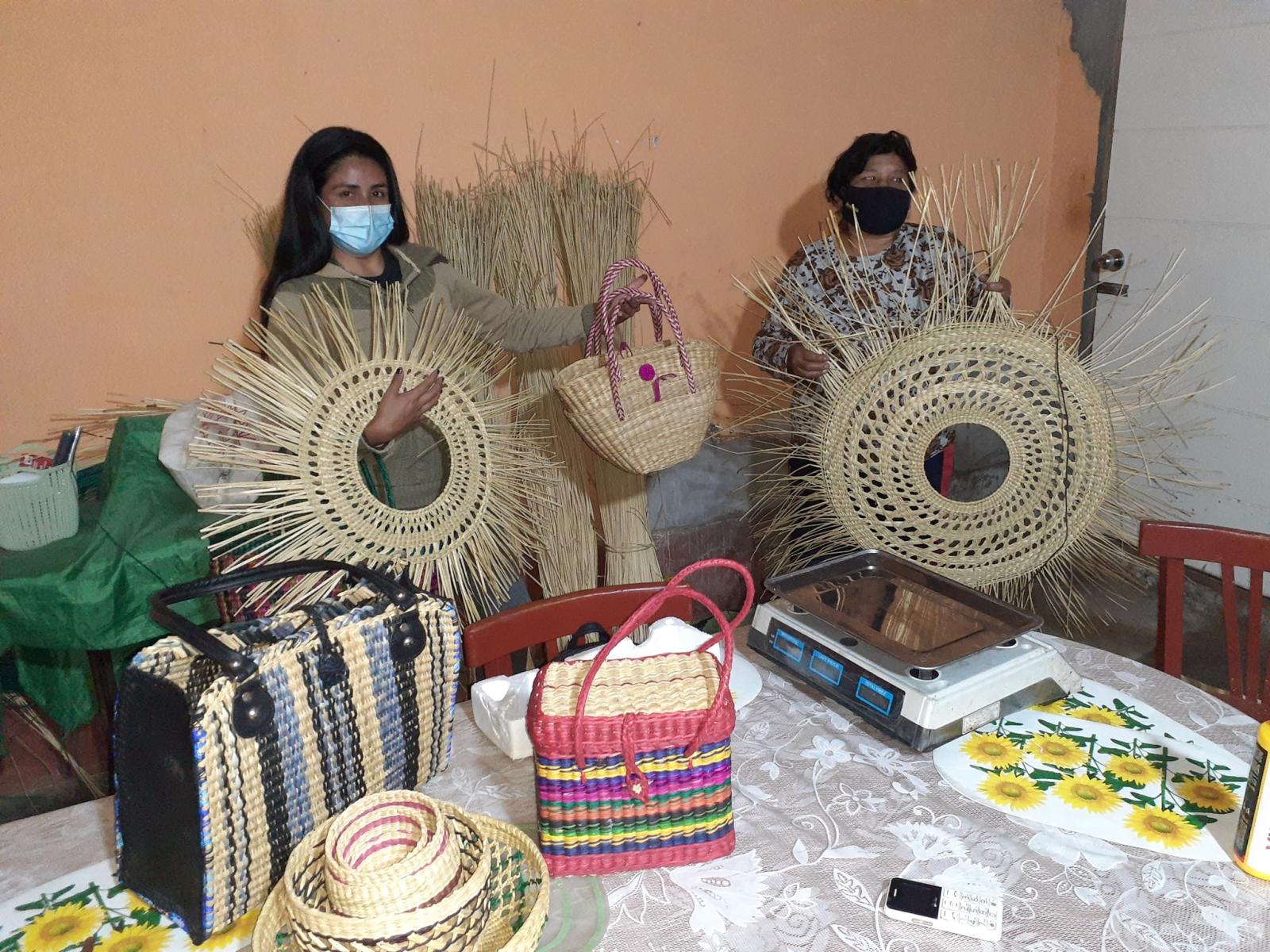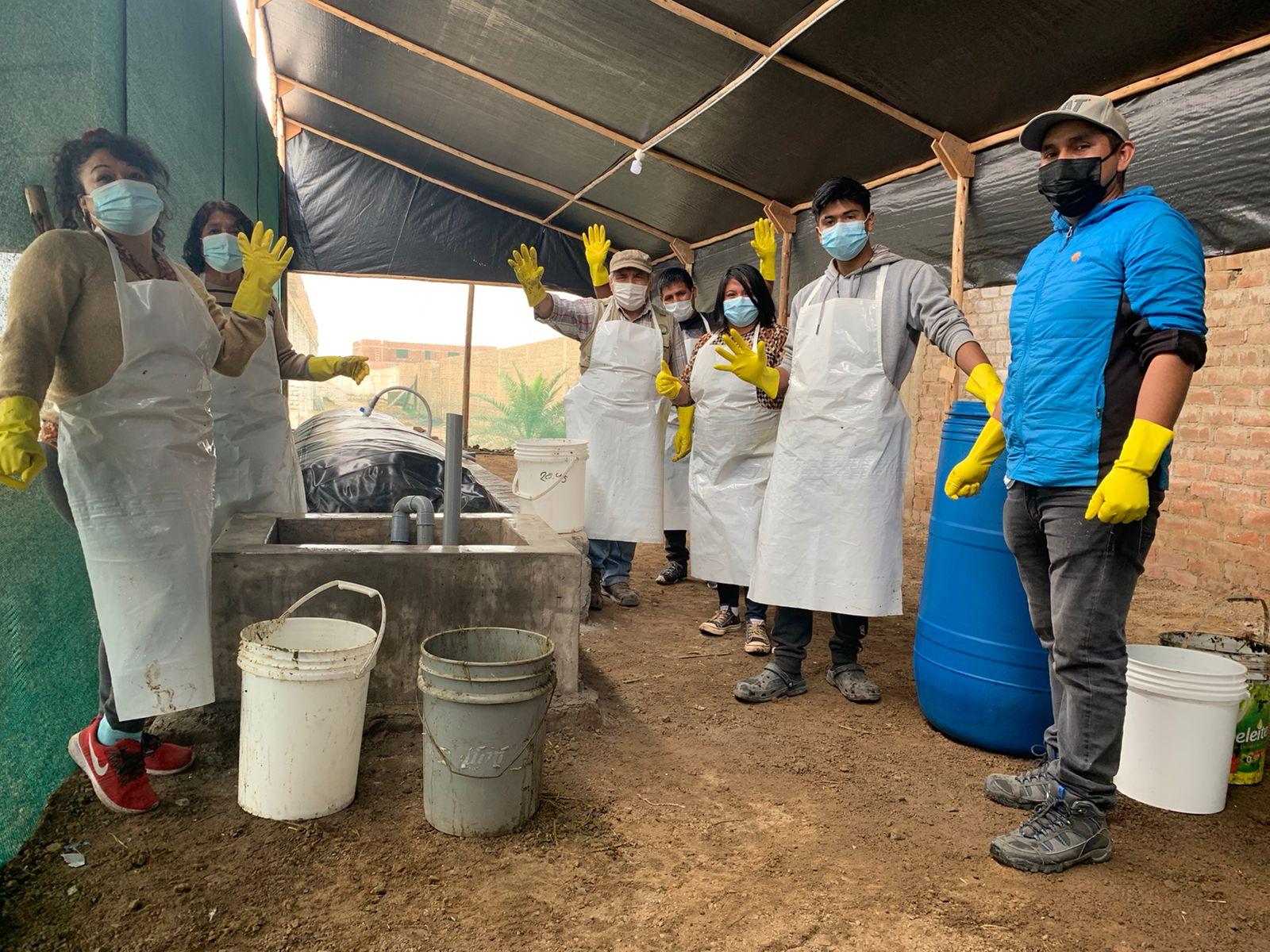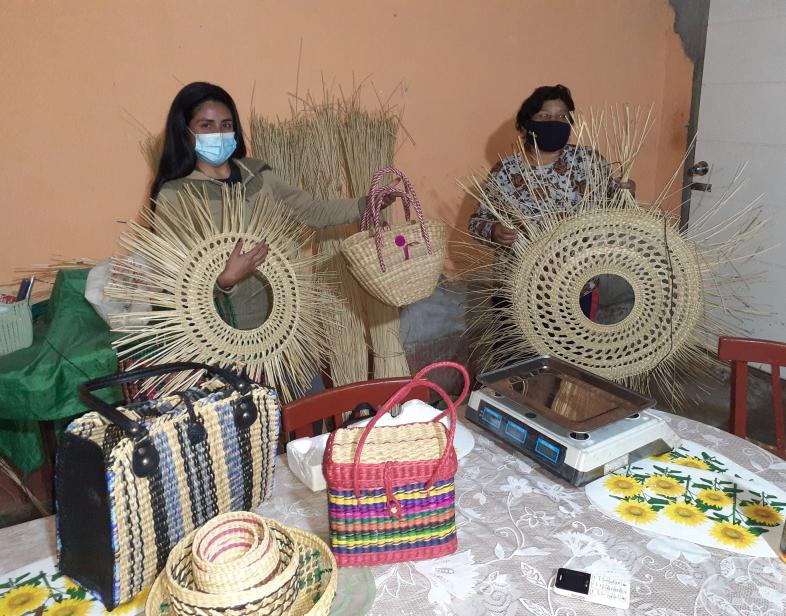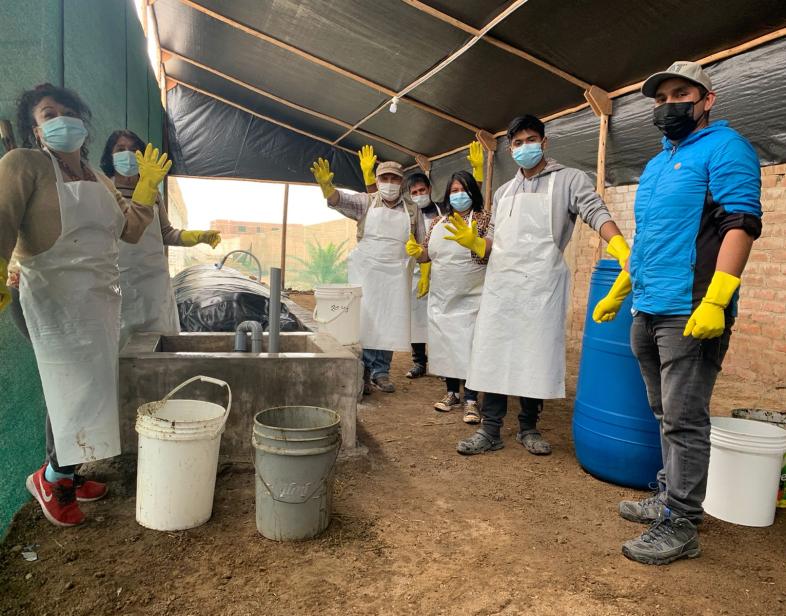An Overview Of Our Solution
The main objective of the project "Adaptation to the impacts of climate change on the coastal marine ecosystem of Peru and its fisheries" is to support the Peruvian Government in reducing the vulnerability of coastal communities to the impacts of climate change on coastal marine ecosystems and their Fishing resources. The project was carried out in two pilot areas, Máncora and Huacho, on the northern coast of Peru and focused on benefiting populations that directly depend on marine resources for their economic livelihood. The most important results are the impacts generated by the interventions to improve the resilience of coastal communities and key coastal marine ecosystems to climate change, as well as the creation of capacities for the implementation of the principles of Ecosystem-Based Adaptation.
- Population Impacted: 3541 people
- Continent: South America
First name
Last name
Organization type
Email Address
Context Analysis
Peru sustains the most productive fisheries in the world, producing almost 10% of the global total. This high productivity is mainly due to the physical and chemical characteristics of its coastal upwelling (Chávez et al., 2008), which allow efficient growth of primary producers, high larval survival rates, and efficient trophic transfer to fish. foragers and main predators. In addition, Peru is among the 10 most vulnerable fisheries to the impacts of climate change globally. It should be noted that the country's fishing and aquaculture contribute to food security by providing an essential protein base for the development and quality of life of the country's population. Fishing pressure is a critical source of stress for ecosystems and their fisheries resources. Land and marine activities, pollution, coastal development, and resource exploitation also increase stress. Solid and liquid waste derived from domestic sources, fishing and landing, aquaculture (eg, biofouling and organic waste), and other industrial activities on the coastal frontier impact the quality of the coastal marine environment. Finally, climate change is affecting the heat content, thermal stratification, productivity, acidity, and oxygen content of the oceans. Peruvian coastal communities, which include 15% of the country's urban population, are highly vulnerable to potential changes in fish production due to variables such as exposure to weather, sensitivity to or dependence on fishing, and limited capacity. adaptation (Allison et al., 2009). Artisanal fishing employs more people than industrial fishing, of which about 57,000 are directly involved in fishing and 19,200 are employed in the production of food for human consumption based on fishery products.
Video file
Describe the technical solution you wanted the target audience to adopt
The solution is based on adopting "win-win" adaptive measures to improve the resilience to climate change of ecosystems and artisanal fishing communities. One measure is the adoption of environmentally friendly fishing gear, while developing incentives from the direct human consumption market. Others are aquaculture and ecotourism, which diversify the economy. Lastly, the conversion of residues from fishing sources into biofertilizers. The management of the biofertilizer is mainly an exclusive activity for women linked to the artisanal fishing activity. The adaptation measures will be sustainable in the long term through the active participation of local communities. This includes improved management of the ecosystem by those with a stake in its long-term sustainability, with fishing quotas, environmentally friendly fishing and harvesting practices, and with the sustainable use of other ecosystem services.
Describe your behavioral intervention.
A large part of the proposed tasks and activities of the project depend on the participation of actors that participate in the productive chain of fishing and aquaculture (ie social organizations of artisanal fishermen, marketers). These tasks and activities are based on the adoption of sustainable fishing methods, the production of biofertilizers, the restoration and co-management of natural banks, improvement in marketing, and the creation of ecotourism companies. The project promotes the diversification of livelihoods as a key for communities vulnerable to climate change to adapt their practices successfully. Livelihood diversification helps ensure that if one economic option is temporarily closed, people can turn to other options to earn a living. Poverty reduction strategies that diversify livelihoods, improve poor people's access to natural resources, and build adaptive capacity (FAO, Fisheries Report No. 870). Adaptation strategies consider short- and long-term impacts and are context and location specific. The three levels of adaptation (community, national and regional) required stronger training, by raising awareness of the impacts of climate change on fisheries and aquaculture, promoting general education and guiding initiatives within and outside the sector.
Behavioral Levers Utilized
As needed, please explain how you utilized the lever(s) in more detail.
Election architecture was the main lever of behavior. Information and material incentives were also involved as part of designing the context for change. The behaviors to change were identified: the fishing gear that had to be replaced or improved, the discharge of organic matter derived from fishing into the sea, etc. It was important to understand the characteristics of the practices and their consequences and thus define what the desired behavior or practice would be. The current context in which the practice is carried out was analyzed, taking into account the factors that influence decision-making, the barriers that exist to achieve a change in behavior and the motivation that promotes the practice. The context was designed to favor behavior change and adoption of new practices, in this case it was carried out by collecting information from research and workshops and developing material incentives in economic diversification.
Video file
Describe your implementation
To adopt sustainable fishing gear and technology, selective fishing gear was installed on 45 boats to reduce pressure on non-target species and improve quality. Cameras were installed on board and a QR code was issued for the commercialization of fishing resources with greater traceability through technology. For the adoption of aquaculture and ecotourism, initiatives were formalized and training was carried out in marine cooking, crafts and first aid. The kitchen ones were linked to a food festival that sought to recognize the commitment of restaurants with the consumption of fish from artisanal fishing. Those of crafts and first aid sought to improve the design, quality standards and safety of tourist experiences. Internships and meetings were held with other ecotourism ventures and related activities in different regions of the country. Advice was given on the design of the web diffusion and the equipment of the tourist enterprises was improved together with an investment plan. For the preparation of biofertilizers based on fishing residues, technical teams of women were organized in productive committees that were later transformed into legally constituted microenterprises. The participation of public organizations was included. The biofertilizer was standardized for scale production, determining its nutritional richness and the form of application to different crops. The participation of actors involved in the fishing production chain, such as social organizations of artisanal fishermen and marketers, was very important. Obstacles include the health emergency in the context of Covid-19, which delayed activities and others were carried out virtually until the restrictions were lifted. The project promoted post-pandemic economic recovery through the activation of responsible tourism and the commercialization of biofertilizers.
Describe the leadership for your solution. Who is leading the implementation?
The base team is made up of four professionals, two men and two women. The general coordinator, José Zavala, is a biologist specialized in Hydrobiology and Fisheries, dedicated to the investigation of hydrobiological resources and coastal ecosystems, and to the planning and implementation of development programs and projects in resource management and biodiversity conservation. The local coordinator is Guadalupe Alarcón, Master in Development Practice, specialist in management of social, environmental and productive projects and specialized in issues of adaptation to climate change, gender approach and governance. The field articulators are Lucero Castro and Luis Atoche. She is an Environmental Engineer and a Master in Ecology, Management and Restoration of the Natural Environment; specialist in projects and safety, occupational health and environment in the public and private sector. He is a fisheries engineer and a master's degree in Environmental Evaluation and Monitoring in Coastal
Share some of the key partners or stakeholders engaged in your solution development and implementation.
-The Adaptation Fund: Source of financing for the project to support adaptation in developing countries vulnerable to the adverse effects of climate change -The Executing Unit 003 of PRODUCE: In charge of executing the project according to the management documents, following the policy and procedures of the agreement signed with PROFONANPE. - PRODUCE: Through the Vice-Ministerial Office of Fisheries and Aquaculture, it is in charge of presiding over the Administration Board (JA), in accordance with the arrangements for the implementation of the project. Likewise, it is in charge of leading and implementing some components of the project. - IMARPE: Support PRODUCE in the implementation and is responsible for the execution of the activities and the achievement of the results of the first components, in coordination with the General Directorate of Fisheries and Aquaculture Environmental Affairs, with the Executing Unit 003 and with the corresponding General Directorates for the execution of the activities and achievement of the results. - MINAM: In its capacity as regulatory entity in environmental matters, through the Directorate of Strategic Development of Natural Resources, it forms part of the JA. - SERNANP: As the entity in charge of protected natural areas in the coastal marine environment, it is part of the JA. - The regional governments (GORES), through their Directorates and/or Fisheries and Aquaculture Managements (ie Piura and Huacho) that integrate the fishing and aquaculture resources of the pilot areas into their management. - Provincial and district municipalities (ie El Alto and Carquín municipalities) that integrate the fishing and aquaculture resources of the pilot areas into their management. - Grassroots associations, unions and local associations related to artisanal fishing and tourism that bring together residents and workers from the pilot areas (ie Los Organos Fishermen's Guild, El Ñuro Fishermen's Guild, Cabo Blanco Fishermen's Guild, etc.)
Who adopted the desired behavior(s) and to what degree? Include an explanation of how you measured a change in behavior.
The main beneficiaries are the artisanal fishermen in the pilot areas. More than 700 direct beneficiaries are identified. Among them are associations dedicated to fishing and aquaculture in the coves of Máncora, El Ñuro, Los Órganos, Cabo Blanco, Vegueta, Carquín and Huacho. As indirect beneficiaries (2,800) the families and population of the areas surrounding the pilot areas are identified. The impact is evident in the 45 fishing vessels that currently have more sustainable fishing gear; the formalization of 3 aquaculture associations and in the process of production and sale; the formalization and equipping of 10 fishermen's associations linked to ecotourism; the creation of 4 exclusively women's associations; 12 traceability experiences with ship technology; 3 women's microenterprises.
How did you impact the environment (biodiversity conservation, ecosystems, etc.)? Please be specific and include measurement methodology where relevant.
It has been possible to process more than 5 tons of fishing waste from fishing terminals and local markets, preventing it from being thrown into the sea and landfills in the areas of Máncora and Huacho, thus mitigating the contamination of coastal marine ecosystems and possible sources of infection. due to the collapse of municipal landfills. More than 5,000 liters of biofertilizers have also been produced, which are being marketed and their properties for agriculture are being tested. The last planting of scallops has been carried out and their growth is expected so that the natural bank can be adequately repopulated. In addition, surveillance activities have continued to prevent the theft or loss of copies.
How has your solution impacted equity challenges (including race, ethnicity, social class/income, indigenous communities, or others)?
3 biofertilizer production plants have been installed with a capacity to process 500 kg of waste per day. The formalization of biofertilizer microenterprises and these plants have allowed the participation of 70 women in the commercialization and production of biofertilizers. In addition, 58 organic agricultural producers were trained in the management and use of biofertilizers. Approximately 10% of the participating fishermen have increased their income, with the capacities developed for their sustainability through commercial agreements and the traceability system. In addition, direct economic income has been generated for women. Women have been empowered, they have representation with 06 technical entrepreneurial leaders specialized in the production of biofertilizers and 06 technical promoters specialized in the commercialization of biofertilizers.
What were some social and/or community co-benefits?
New sustainable livelihoods were generated through the creation of biofertilizer plants and the formalization of associations and micro-enterprises. The quality of life was improved as a consequence of the additional economic family income. Through the initiatives promoted by the project, social articulation at the local and regional level is made visible, as well as the negotiation, leadership and decision-making capacities of the participants are strengthened.
What were some sustainable development co-benefits?
The implementation of the adaptation measures developed by this project contribute to SDG 13, referring to adopting urgent measures to combat climate change and its effects, and to SDG 14, referring to conserving and sustainably using the oceans, seas and marine resources. for sustainable development.
Sustainability: Describe the economic sustainability of your solution.
The economic sustainability of the interventions was sought through: the production of biofertilizers from the processing of organic waste from artisanal fishing, which has created a new way of life for the economic development of women in the area; the promotion of community tourism consolidating practices of marine conservation, health and quality in the gastronomic offer and crafts with local products; the improvement of fishing marketing, managing to connect the fisherman and the final consumer through commercial agreements and promoting the registration of 33 beneficiaries to a fishing traceability system that will allow them to access better prices. Projects for public funds were also prepared.
Return on investment: How much did it cost to implement these activities? How do your results above compare to this investment?
The funds to implement the activities detailed in this application came from the Adaptation Fund and were 3,124,800 USD. The intervention is based on the adoption of sustainable fishing methods, the restoration and co-management of natural banks, the development of sustainable aquaculture through small-scale concessions, the establishment of ecotourism companies, the improvement in the commercialization of hydrobiological resources, the conversion of fishing residues into bioproducts and the initiation of certification processes in artisanal fisheries.
How could we successfully replicate this solution in Latin America?
The results of the project allow us to visualize that, by having improved conditions, which allow improving their livelihoods, the project partners will increase their resilience against the impacts of climate change. This seen in the context of research that allows for greater predictive elements of these impacts at the local and regional level will catalyze the processes of formalization, innovation, and entrepreneurship in other marine-coastal areas, in a phase of implementation of experiences in which All the processes must be incorporated, from the initial stages and formalization requirements to the responsibilities and agreements of the competent institutions according to the subject at the local, regional and national level. In this context, taking into account the results of the pilot experiences of the project, Governance for adaptation to climate change must become the central element of scaling up.




